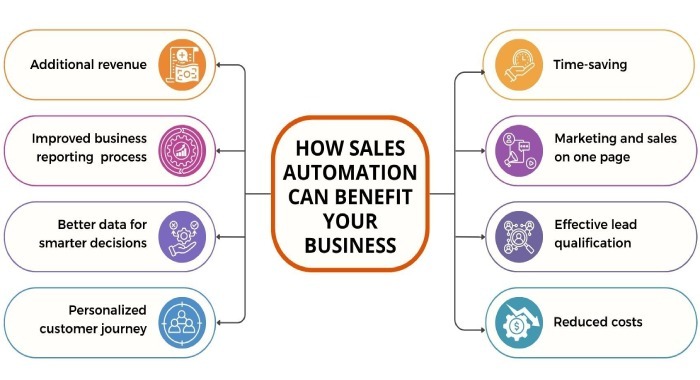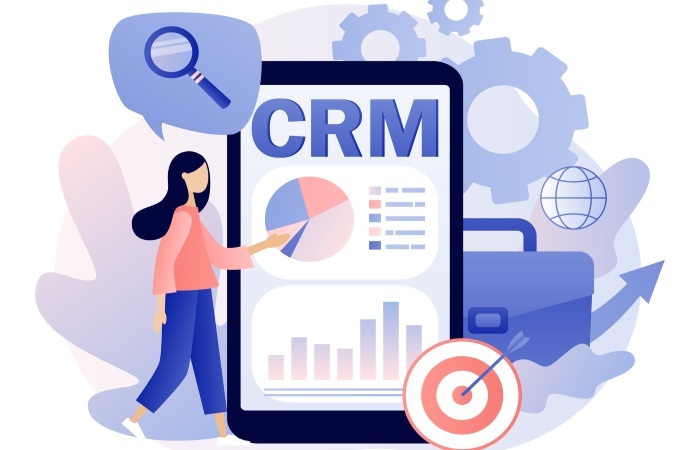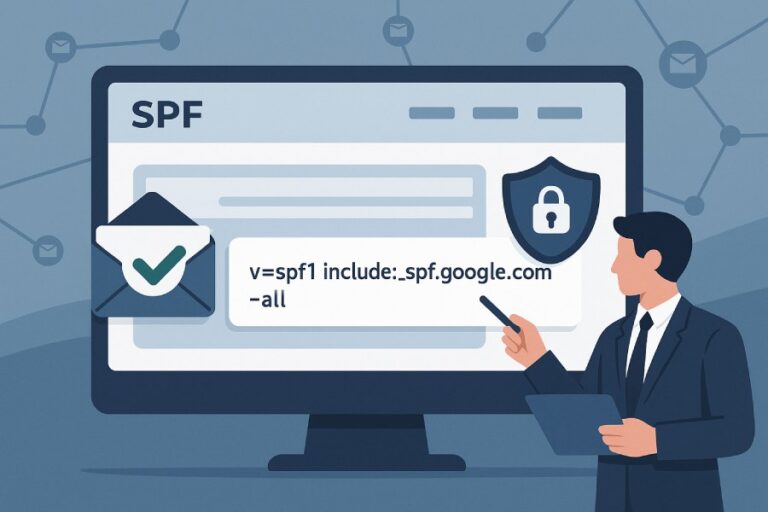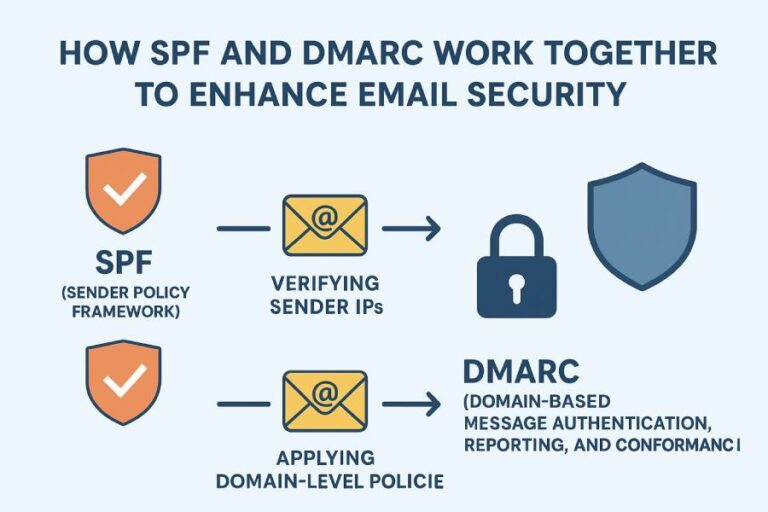
An SPF record is the primary authorization layer that determines whether your SPF configuration will be effective or let any domain send emails on your behalf. These records are basically a list of all the addresses and domains that are allowed to send emails using your domain name. These are published as DNS TXT records and serve as a public declaration of trust, telling receiving mail servers to verify whether an email is coming from an authorized source or not.
So, if there’s any problem in this record, it will inevitably cause problems with your SPF configuration and potentially put your organization at risk of phishing or spoofing attacks. That’s why your SPF record should be set up properly.
By properly setting up the SPF record, we don’t mean simply including the list of all domains and services that send emails on your behalf. Your SPF record should evolve with your company and its email infrastructure.

Let’s see what “evolving with your infrastructure” actually means and how often you should conduct SPF audits. Easily audit your SPF record with our automatic SPF flattening tool, and strengthen your email security and deliverability with DMARC and DKIM authentication.
What does it mean to keep your SPF record up to date?
Keeping your SPF updated means ensuring that it includes everyone who currently sends emails on your behalf. As your organization grows and changes over time, you may add new tools to your tech stack, such as marketing platforms, helpdesks, sales automation tools, or cloud email services, or hire a third-party service.

Everything must be reflected in your SPF record. If you miss out on anything, emails from those tools might fail authentication checks, even though they’re legitimate. At the same time, tools you no longer use should be removed from the record. Old entries just take up space, add unnecessary DNS lookups, and can even become risky if they are taken over by someone else.
Apart from this, you should also ensure that your SPF record is clean, accurate, and includes no more than 10 DNS lookups. This is a hard limit in the SPF specification; if your record exceeds it, receiving servers may return a permanent error and treat your emails as unauthenticated, even if everything else is correct.

How do you know if your SPF record has problems?
SPF misconfigurations don’t really show up explicitly until your important emails start getting blocked, or you realize that your domain is being misused. So, before it happens, look for the following signs:
- Your emails are landing in spam or bouncing back: If recipients report that your emails are going to junk folders, or worse, not arriving at all, it could be due to a misconfigured or incomplete SPF record.
- You see SPF failures in your DMARC reports: If you’re using DMARC, watch your aggregate (RUA) reports. Frequent SPF “fail” results for sources you trust are a clear sign that your SPF record is missing entries or misaligned with the “From” address.
- You added a new tool but didn’t update SPF: Services like email marketing platforms, CRMs, and helpdesk tools often send emails on your behalf. If they aren’t reflected in your SPF record, their emails will likely fail authentication.
- Your SPF record is too long or exceeds the 10 DNS lookup limit: SPF has a hard cap of 10 DNS lookups. If you exceed it, which is easy to do with too many includes, your SPF record will be invalid.
- Your record still includes old or unknown services: old entries can linger long after a tool is no longer in use. They add risk if the domain is taken over by someone else or gets compromised.
- Your SPF ends with +all: This is a major misconfiguration. It allows any sender to pass SPF checks, making your domain vulnerable to spoofing. Replace it with ~all or -all for better protection.

How often should you audit your SPF record?
Although there are no fixed timelines to follow when updating your SPF record, we recommend doing so every 3 months. Performing quarterly checks ensures that you don’t miss out on any updates, or if there’s misconfiguration or a missing entry, you fix it before it becomes a major problem. These regular audits help you stay aligned with your current email infrastructure, avoid deliverability issues, and reduce the risk of unauthorized senders exploiting your domain.
Also, let’s say you added a new tool in your tech stack that will be responsible for sending emails; in that case, you don’t have to wait three months to update your SPF record. You should add the new service’s domain or IP to your SPF record right away to ensure its emails pass authentication checks. The same goes for when you remove or replace a service— those entries should be cleaned out promptly.

What should you look for?
Now that you know how often you should vet your SPF, let’s see what you should look for:
- Are all your active senders included? Make sure every service, IP, or domain that sends emails on your behalf is listed. This includes third-party tools like CRMs, marketing platforms, or cloud-based email services.
- Are you within the 10 DNS lookup limit? If you exceed this lookup limit, the receiving mail servers may treat even your legitimate emails as unauthenticated. So, make sure you remove unwanted domains to stay within the limit.
- Is your “all” mechanism set correctly? You don’t want to end your SPF record with +all, which allows anyone to send emails on your behalf and completely defeats the purpose of SPF. Instead, use ~all (soft fail) or -all (hard fail), depending on how strict you want to be with enforcement.
- Are there any outdated or unnecessary entries? Scan your record for services you no longer use. These entries just take up space and can even become a liability if the associated domains get taken over or misused.

While auditing your SPF record regularly is a must, there’s always a scope for human error if you do it manually. This is why you should use a reliable SPF validation tool to seamlessly monitor and update your record.
Need help auditing and updating your SPF record? Contact us today!






